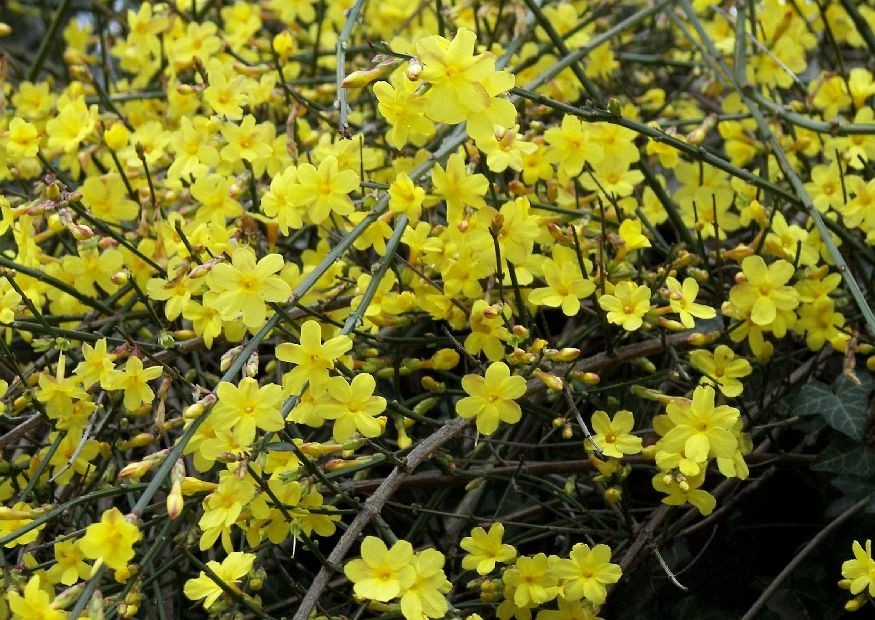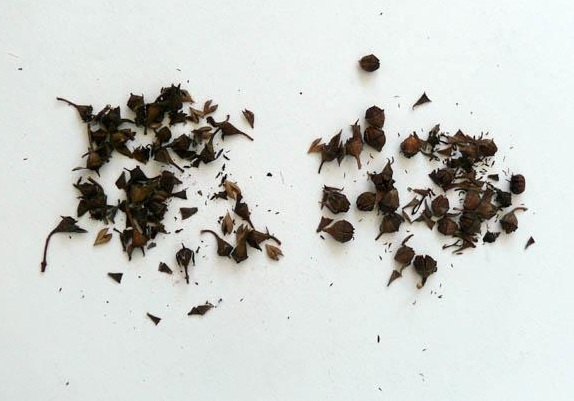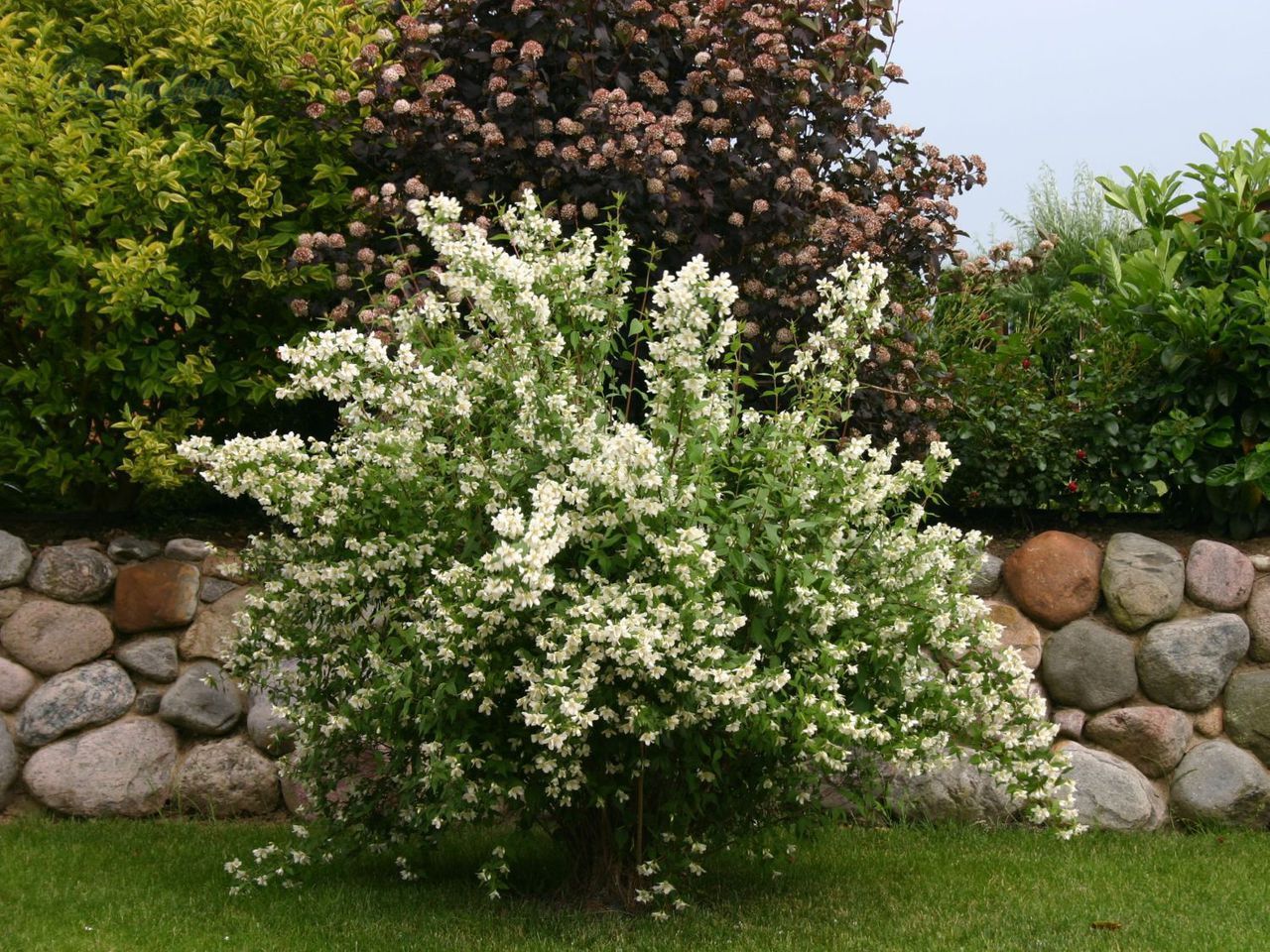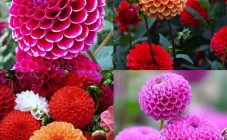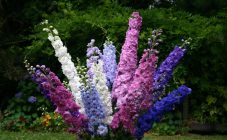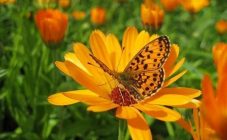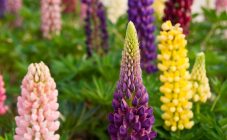Content:
Holo-flowered jasmine is an original variety of real jasmine. Differs in long flowing shoots. Flowers appear before leaves - even in winter, which is why it got this name. The culture is grown as an ornamental plant.
Features of agricultural technology
This species can be grown at home, in a personal plot or cottage. Planting and caring for jasmine in the open field does not cause difficulties if you know in advance the peculiarities of cultivation.
Botanical Description:
- branches are long, drooping, low-leafed;
- leaves are trifoliate, dark green;
- blooms from January to April - because of this, people often call it "winter jasmine";
- flowers are yellow, about 2.5 cm in diameter, scattered along the entire length of the shoot.
The plant is winter hardy, it feels good in temperate latitudes - in the Moscow region, Western Siberia, in the Urals. Not afraid of frosts down to -10 ° С. With a strong cold snap, it needs shelter - without protection, it can die.
One of the most important questions, the answer to which is often neglected by beginners is where is it better to plant the holoflower jasmine on the site. It grows best in sunny or slightly shaded areas. The plant should be protected from cold winds. The best option is near the wall of the house.
What soil does Holoflower jasmine like more:
- the plant is not demanding on the soil, but prefers slightly acidic and breathable (it does not bloom on alkaline and neutral soils and develops slowly);
- the site must be well drained;
- the type of soil can be almost any other than heavy clay.
On clay soils, water stagnates, air circulation deteriorates. When grown in such an area, the susceptibility of the crop to frost increases, the number of flowers decreases and the likelihood of death increases. Therefore, it is best not to plant jasmine in areas with such soil.
The plant needs moderate watering. The soil must not completely dry out. Better to use rainwater or settled water. The soil is moistened all year round, even in winter, choosing dry, frost-free days.
Jasmine cannot climb the support on its own, so its stems need to be tied up. It is often hauled over a fence to create an original hedge.
Propagation by cuttings and layering
Before planting the Golocvetkovy jasmine variety, you should prepare the planting material:
- in the second half of summer or early autumn, twigs up to 15 cm long are cut (green cuttings take root better);
- they should have a "heel" - a piece of bark of the branch on which they grew.
A soil mixture is poured into a pot from mixed in equal parts:
- peat;
- sand;
- leafy land.
A small depression is made in the soil and a cutting is planted in it. The cut is pretreated with a root stimulator.
Until spring, the plant is kept at home. It is placed on a sunny window and watered regularly. Jasmine takes about 1.5 months to take root in fertile soil. When it is time to plant jasmine, the weather should be warm outside.
The culture is often propagated by layering. The shoots of the bare-flowered variety take root easily. To do this at the beginning of the season:
- the branch is cut or wrapped with wire, pressed against the soil surface;
- the place of contact is sprinkled with earth.
By the end of summer, an independent bush will form. It is left to winter near the mother plant. The next year, it is dug out of the soil and planted in the right place. The advantage of this method is that a young plant has a developed root system, so it can easily adapt to a new site.
If jasmine is not yet growing on the site, then the seedlings are bought in specialized nurseries. Choose healthy and well-developed specimens in closed containers.
Jasmine can be planted in fall or spring. The distance between the plants is equal to ½ the width of the bush. If you plan to create a hedge, then the gap is reduced to 1 m.
Planting a seedling in open ground:
- Prepare a pit 60x60cm. The soil at the bottom is loosened, a layer of soil mixed with compost and fertilizers (10-20 cm) is poured on top.
- The seedling is carefully removed from the container, moistened with an earthen clod.
- The plant is buried at the same level as it grew in the pot.
- The pit is covered with soil, watered, the trunk circle is covered with mulch (straw or fallen leaves).
You should immediately put a support next to it to set the direction of growth.
Seed propagation
Cultivation of holo-flowered jasmine from seeds is a laborious method, therefore it is practiced much less often. However, if desired, it is quite possible, if you create suitable conditions.
Optimal soil composition:
- sod land or peat;
- sand.
The components are mixed in equal proportions. The seeds are placed in pots with fertile soil and subjected to long-term stratification - they are removed for 2-3 months in a refrigerator or other place with a temperature of + 2 ... + 3 ° C.
After this period, the soil in the pots is renewed. Until the seeds sprout, the container is covered with glass, and the ground is regularly sprayed with water from a spray bottle. When the sprouts hatch, the pots are opened.
Jasmine is planted in open ground when the spring frosts pass and the shoots get stronger:
- a hole is dug in the ground, the size of which is slightly larger than the volume of the roots;
- a seedling is placed in the soil;
- covered with earth, lightly tamped and watered abundantly.
At first, the shoots are protected from direct sunlight so that the "winter" jasmine does not get burned.
Culture care
Jasmine care consists in:
- watering;
- weeding;
- dressing.
At least twice during the summer, they loosen the ground in the root zone. Weeds are systematically removed and watered. The soil is moistened as it dries. In dry periods, water consumption is increased to 30 liters per bush.
For the plant to bloom profusely, you need to maintain soil fertility. It will develop on depleted land, but you should not expect a large number of buds.
In the spring, they bring into the ground:
- for young plants - slurry (1 in 10);
- 2 years after planting, mineral fertilizers are added (approximate composition per 10 liters of water: urea 15 g, potassium sulfate 15 g, superphosphate 30 g);
- at the end of the season - 100-150 g of wood ash per 1 bush.
During active growth and flowering, the plant is fed:
- liquid mullein (1 in 15);
- complex mineral fertilizer.
During the growing season, the compost layer in the trunk circle is periodically renewed. The procedure is carried out carefully so as not to damage the root system.
The blooming period of holo-flowered jasmine begins at the end of winter - around February. Many people grow jasmine for this particular feature. An amazing sight - it is cold outside and there is snow, and the bush is strewn with egg-yellow inflorescences.
But with improper care, problems often arise.
The main reasons for the lack of flowers:
- Disease or pest infestation - you should carefully examine the jasmine bush for damage. If signs are found (dried, twisted and yellow leaves, dark spots), the plant is treated with fungicides or insecticides.
- Excess nitrogen - Jasmine Golofvetkovy actively builds up green mass to the detriment of flowering. It is necessary to balance the substances by introducing phosphorus and potassium into the soil.
- Stagnant water - The plant needs a well-drained soil. When stagnant, diseases develop and flowers are absent.
- Strong shading - the plant prefers sunny areas. It was necessary to first study the features of cultivation and only then proceed to planting.
- No pruning - jasmine produces more buds on young branches. In spring, shoots with wilted flowers are removed, if necessary, the bush is thinned out. By the new season, new ones will grow in their place, capable of flowering.
- Young sapling - the plant begins to bloom after two years. Immediately after planting, it spends energy on adaptation, development of green mass and root system.
Jasmine goes well with conifers and shrubs, pink-flowered wolfberry. Other crops that bloom in early spring can be planted nearby:
- hellebore;
- snowdrop;
- crocus;
- daffodils.
Do not plant fruit trees nearby. Jasmine will grow through their crown, inhibiting development and reducing yields.
How to care for the fall and prepare for winter
About 2 weeks before the first frost, the last top dressing is applied. If the culture grows in a warm region, then it does not need shelter. In the northern regions, preparation for wintering is necessary.
To protect the plant from freezing, the trunk circle is slightly dug up, trying not to touch the roots, and mulch:
- compost;
- needles;
- fallen leaves.
With proper care, holoflower jasmine blooms beautifully and profusely. The main thing is to choose a suitable place for growth. It is easy to propagate by cuttings or layering. The seed method is much more laborious and less productive, therefore it is not popular.

